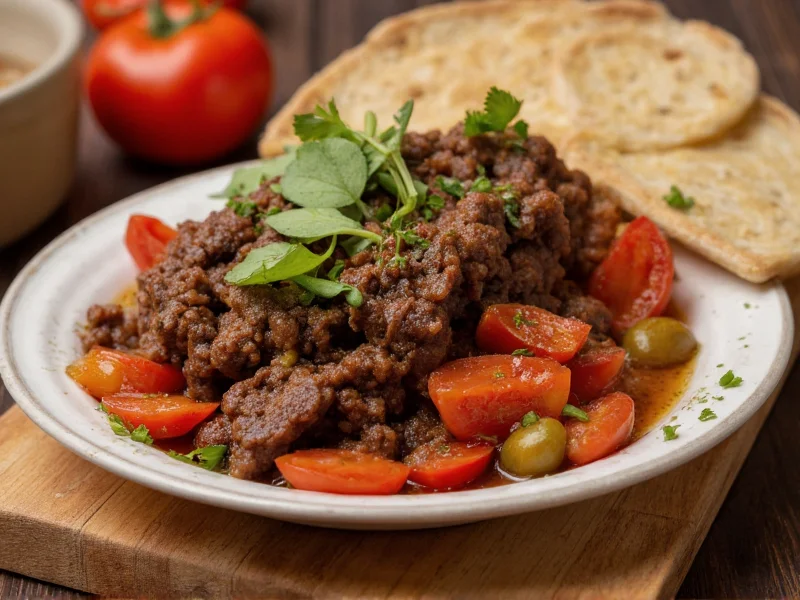A mole dish represents one of Mexico's most sophisticated culinary traditions, featuring richly layered sauces that form the centerpiece of many regional specialties. Far from being a single recipe, mole encompasses numerous regional variations across Mexico, each with distinctive ingredients and preparation methods passed down through generations. Understanding what constitutes an authentic mole dish requires exploring its historical roots, ingredient complexity, and cultural significance in Mexican cuisine.
The Historical Origins of Mole
Mole's history stretches back to pre-Hispanic Mexico, where indigenous communities created complex sauces using native ingredients. The word "mole" derives from the Nahuatl word "mōlli," meaning sauce or concoction. While popular legend attributes mole poblano's creation to 17th century nuns in Puebla, archaeological evidence suggests mole-like sauces existed long before Spanish colonization. These early versions combined native chilies, tomatoes, and seeds without the European-introduced ingredients like chocolate that characterize many modern moles.
Regional Varieties of Mole Dish
Mexico's diverse geography has produced numerous distinct mole varieties, each reflecting local ingredients and culinary traditions. The following table outlines key regional moles:
| Mole Variety | Region of Origin | Distinctive Ingredients | Color |
|---|---|---|---|
| Mole Poblano | Puebla | Chocolate, ancho/pasilla chilies, sesame seeds | Dark brown |
| Mole Negro | Oaxaca | Charred chilies, multiple spices, more chocolate | Nearly black |
| Mole Coloradito | Oaxaca | Guajillo chilies, less chocolate | Reddish-brown |
| Mole Verde | Multiple regions | Tomatillos, pumpkin seeds, fresh herbs | Green |
| Mole Amarillo | Oaxaca | Guajillo chilies, yellow tomatoes | Yellow-orange |
Core Ingredients in Traditional Mole
Creating an authentic mole dish requires patience and attention to ingredient quality. While recipes vary by region and family, most traditional moles share these fundamental components:
- Chilies - Ancho, pasilla, mulato, and guajillo form the flavor base
- Spices - Cumin, cloves, cinnamon, and black pepper add complexity
- Nuts and seeds - Almonds, peanuts, sesame seeds, and pumpkin seeds provide texture
- Tomatoes or tomatillos - Contribute acidity and body
- Chocolate - Primarily in darker moles, adds depth without sweetness
- Breadcrumbs or tortillas - Thicken the sauce
The preparation process typically involves toasting, grinding, and simmering ingredients for hours to develop the characteristic complex flavor profile that defines a proper mole dish. Authentic preparation requires multiple steps rather than simply mixing pre-made ingredients.
Serving Traditions for Mole Dishes
Understanding how to serve mole properly completes the authentic experience. Traditional presentation follows specific customs:
Mole dishes typically feature shredded or whole chicken or turkey as the protein base, though some regional variations use pork or even fish. The sauce should be ladled generously over the meat, not merely alongside it. Traditional accompaniments include:
- White rice to balance the rich sauce
- Warm corn tortillas for scooping
- Refried beans for additional protein
- Roasted plantains for sweetness contrast
In Mexico, mole dishes often appear at celebrations and special occasions rather than everyday meals due to their labor-intensive preparation. The most authentic mole dish experiences come from family recipes passed down through generations, with each household having its distinctive variation.
Common Misconceptions About Mole
Several misunderstandings surround mole dishes that deserve clarification. Many people assume all mole contains chocolate, but only certain varieties like mole poblano and mole negro include it. Others believe mole is extremely spicy, when in reality the heat level varies significantly by type and regional preference, with many traditional moles emphasizing flavor complexity over heat.
Another frequent error involves confusing mole with guacamole, which shares the same Nahuatl root word but refers to an entirely different preparation. While both represent important Mexican culinary traditions, they differ completely in ingredients and preparation methods.
Experiencing Authentic Mole
For those seeking genuine mole dish experiences, understanding regional specialties proves essential. Oaxaca offers the greatest variety with its renowned "seven moles," while Puebla claims the original mole poblano. When evaluating mole quality, look for sauces with balanced flavors where no single ingredient dominates, a smooth texture without graininess, and complex aroma that develops as you eat.
Home preparation requires significant time investment but yields rewarding results. Start with simpler varieties like mole verde before attempting more complex recipes. Properly made mole should have multiple flavor layers that reveal themselves sequentially rather than a single dominant taste. The sauce should coat proteins generously without being overly thick or watery.











 浙公网安备
33010002000092号
浙公网安备
33010002000092号 浙B2-20120091-4
浙B2-20120091-4